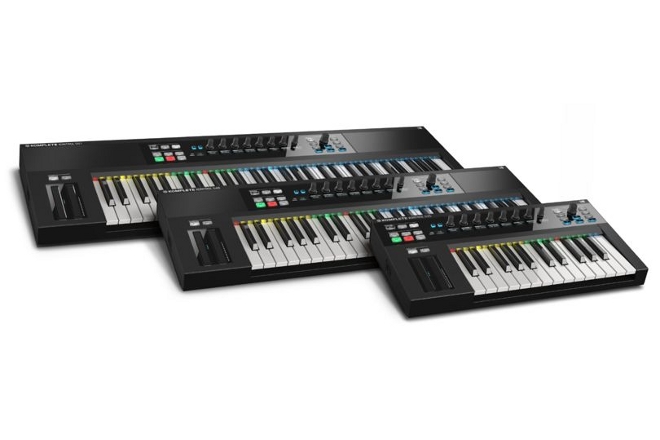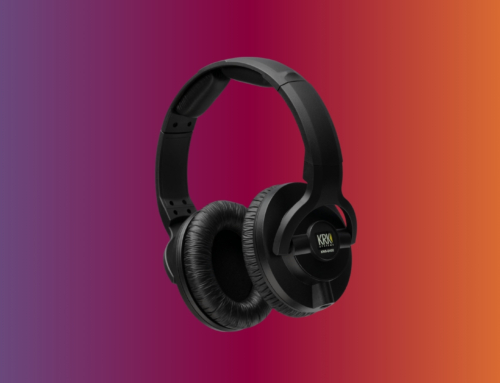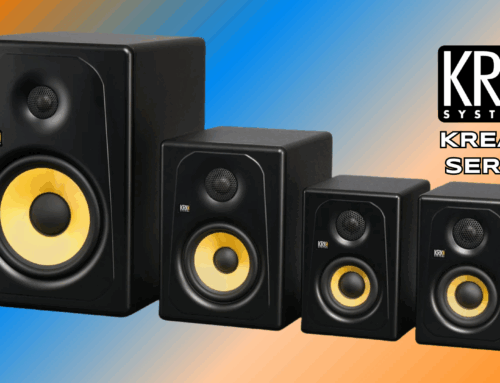Announced in September 2014, the Komplete Kontrol S-Series, a line of three MIDI controllers, essentially supersedes Native Instruments’ flawed Kore line with an entirely new set of features and functionality.
Three sizes – S25 for a 25-key keyboard, S49 for 49 keys, and S61 for 61 keys, all with a semi-weighted Fatar keybed – provide a compact, easy way to navigate Native Instruments’ extremely complex and comprehensive Komplete Kontrol 10 software. Clear functions allow you to browse, play, and control instruments, all while giving a truly excellent feel for a synthesizer.
Furthermore, the S-Series complements the older Maschine, with the former ideal for instrumental sounds and the latter better for beats and drums. But no matter which you choose, both offer extremely similar functionality, let you spend more time creating music instead of sitting at a computer, and present an innovative way for studio producers to manage plug-ins and create tracks.

All S-Series products have three crucial functions. The Komplete Browser™ lets the user go through and load sounds from the full Komplete Kontrol software with a tag-based cloud system. By pressing Browse and turning on the push encoder, the user can search for and select any sounds, divided by type and based on keywords, from all Komplete Instruments. As a bonus, the keyboard remains functional even when the user’s in Browse mode.
Part of the device control section, Native Map™ assigns all key parameters for each Komplete Instrument to the touch-sensitive controller knobs, which are right at the users fingertips. Native Instruments designers already mapped out the pathways, and from here, all parameter names load instantly and then become visible on the Clear View display. While convenient for setting up, as you won’t have to manually map out the parameters yourself, some consider it a weak point that the user can’t override these settings just yet.
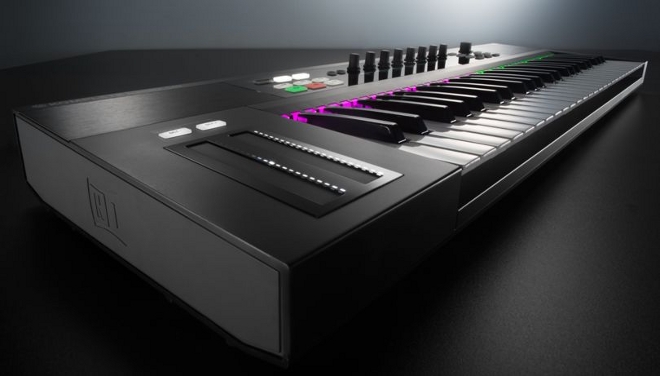
The Light Guide™ is one of those features that seems familiar – lighted keyboards are so common now that even Casio makes them – but is applied slightly different here. With the S-Series’ functionality, the colored lights indicate key switches, zones, and all other physical features and are used to provide performance feedback.
At a glance, it’s a particularly helpful feature for the producer who doesn’t have a piano or synthesizer background. The lights quickly identify drum cells, phrases, and more musical characteristics for all Komplete Instruments. As well, the lights, all located above each key and visible in a range of conditions, flash to display in-coming and previously-recorded notes.
The lights correspond with eight display screens, which indicate the controller data to which they’re configured. The LEDs turn blue once the USB connects to a computer and act as a musical guide. As a result, the user focuses on the keys and display screens, rather than glancing back and forth between the synth and the computer. This, ultimately, creates more of a hands-on feel for the user, and because Native Instruments ensures the parameters for each sound are clearly displayed on each screen, the user can simply go deeper into it by pressing left and right buttons.
The Smart Play™ feature is perhaps the most similar in functionality to what you get with Maschine, and like the Light Guide™ is helpful for the user without a piano-playing background. Its functionality is fairly standard – use it to play single-key chords, map out scales, and make melodies with the arpeggiator – but Native Instruments replaced the pitch bend and modulation wheels with a set of flexible touch strips.
With LED functionality, these let the user bend, warp, and automate sounds, all while mirroring typical pitch and mod wheel functionality. Going beyond, these two may be configured to have better gravity of elasticity, based on your needs, and easily shift settings on the instrument.
Tied into this, the S-Series’ “performance section” includes a pair of buttons for easily and clearly controlling all scales and arpeggiator melodies. Although it isn’t compatible when the S-Series is used as a standard keyboard, it’s part of the device’s overall simplified functionality.
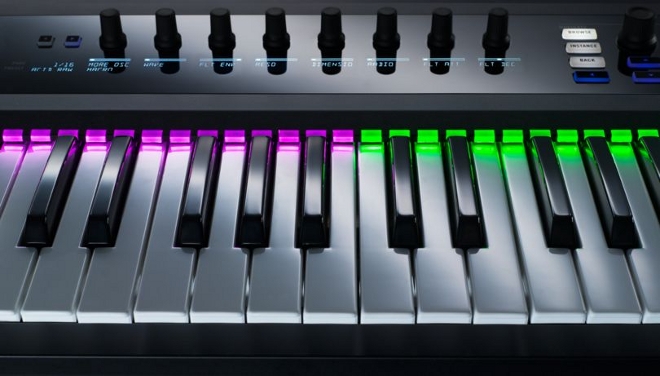
What can you do? If you’ve ever used Native Instruments’ Maschine Studio, the functions here are pretty much the same. With the arpeggiator, eight controller knobs let you turn one or a group of notes into a melody, all while managing the parameters for direction, rate, rhythm, patterns, and variations. For scales, the user gets similarly instant access to incorporating a melody, with all pitches mapped out. As well, Chord Mode beefs up your compositions with in-tune harmonic depth, all possible from a single key. Just select the mode and inversion or load up a chord set.
When it comes to usability, both within your DAW and with software, the S-Series is ideally designed for Komplete 10 and Komplete 10 Ultimate and is compatible with Komplete 9 and Komplete 9 Ultimate. As well, because Maschine works with Komplete Instruments and Effects, all you have to do is hook up your S-Series keyboard to have access to the software and a full range of percussive and melodic sounds.
That’s not to say MIDI compatibility is completely out of the question, and Native Instruments’ plays up this aspect, particularly because it’s so limited with Maschine. If you’re considering adding a third-party instrument into your track, Komplete Kontrol naturally switches between MIDI mode and Kontrol software and lets the user change touch strip behavior, add keyboard splits with visual feedback, and create custom templates.
There are several selling points for the S-Series. No matter which model you use, everything is simply right there, it integrates well with the software, and it takes you away from the computer. If you’ve been feeling that soft synths remove the tactile character that older analog equipment used to have but still want to have an up-to-date studio, the S-Series essentially bridges both worlds.
